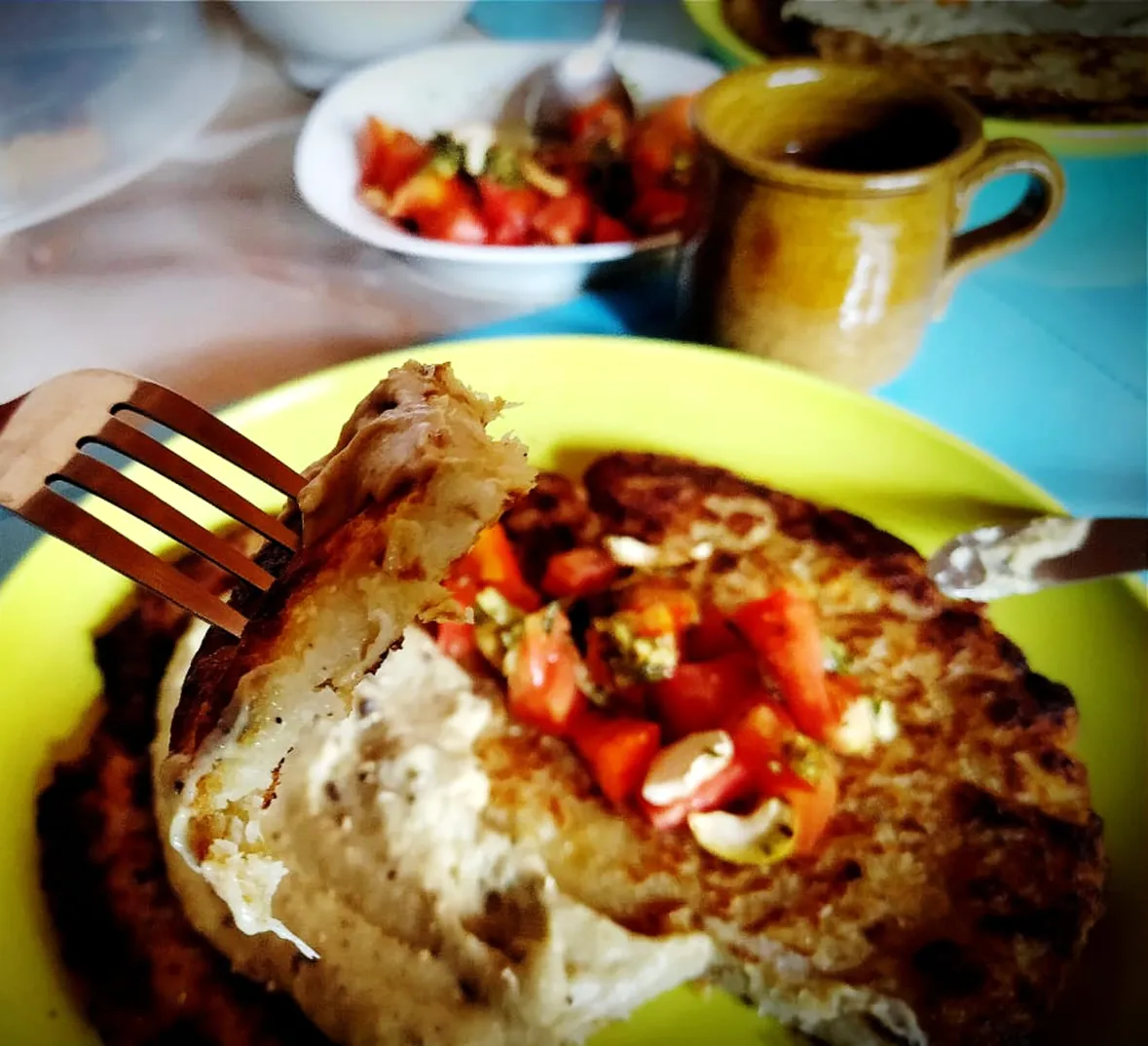Hi, foodies in the Hive!
I hope you are all healthy and well 😃
If you see a cachapa for the first time in your life, you will see a thick, rustic pancake of crushed corn. When you taste it, you'll realize that it's a rather thick sweet cornbread; the aftertaste is sweet and milky with an unmistakable aroma of firewood.
Today I want to share with you one of my many recipes for homemade cachapa which has the same roasted flavor, texture, and sweetness than the original, which will make you forget for a delicious while it's not crushed corn you're eating. I make them with corn flour, coconut--milk &--bagasse, roasted eggplants, and boiled cassava.
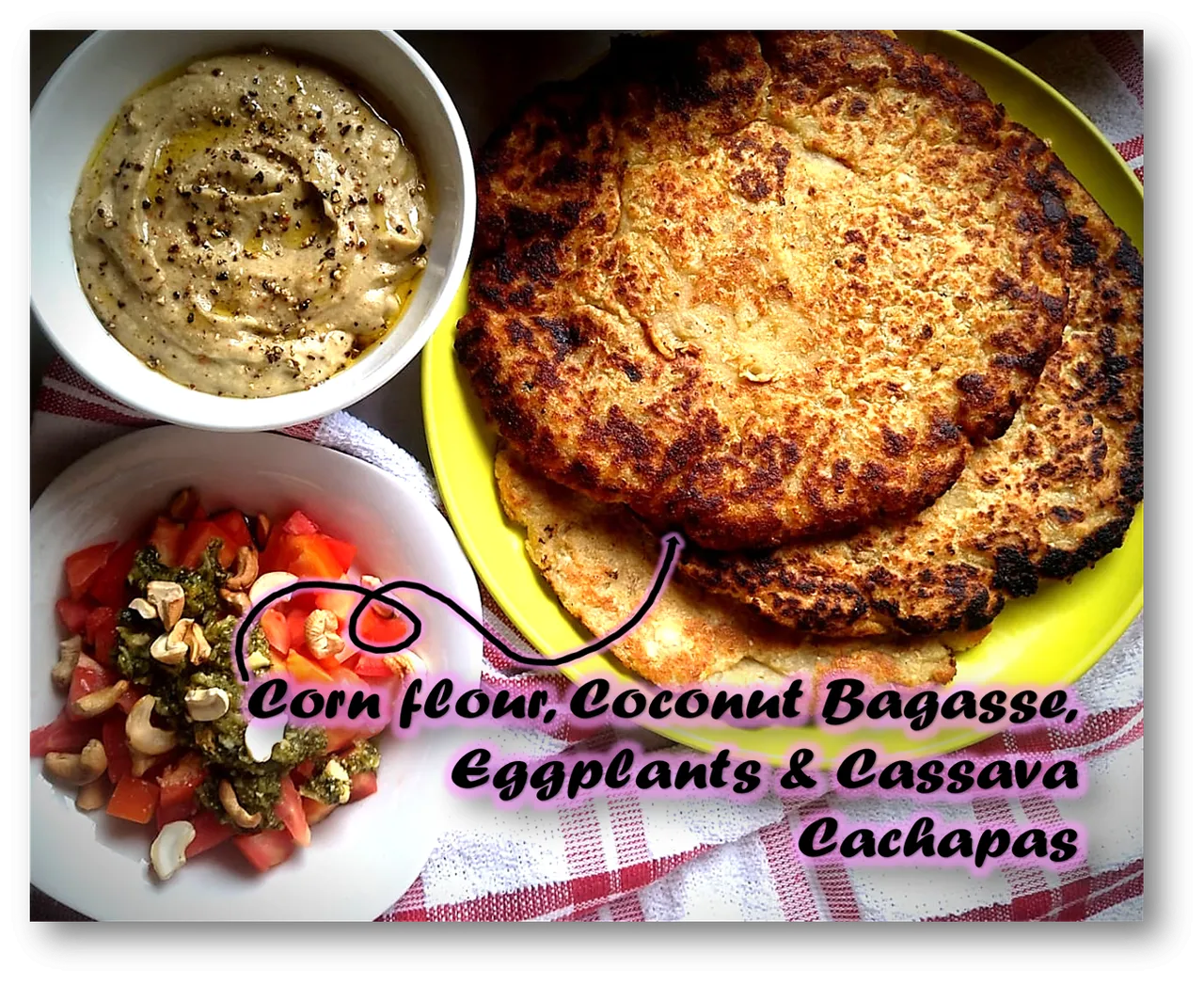

A cachapa, a piece of fruit and a coffee has proven to be a good breakfast for me when I have a long day ahead of me and I know we'll have a late lunch.
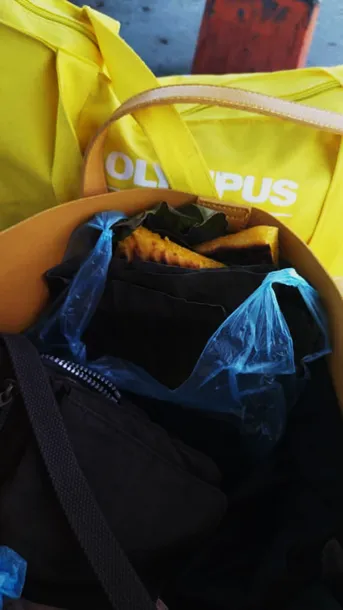
I usually buy them at a roadside stand on my way home when I travel on weekends to my second job in the neighboring state. The lady at the stand, wraps them in plantain leaves and sells them for $1 a portion for one person. I buy 3 or 4, for my husband and myself, and to give to my dad, who lives quite close to us--a 5 minute bike ride.
Whether they're the traditional cachapas or the variants that we come up with at home, they're an energetic meal that sustains you for many hours, which is really convenient if you have a hard day ahead. Today I decided to accompany our unconventional cachapas with cashews and digestive foods: eggplant and garlic spread, tomatoes, fresh garlic and basil pesto. If you try having this or something similar for breakfast, I can assure you that you'll feel satisfied for many hours and with lots of energy, but also light enough to walk many kilometers or even ride your bike.



To make cachapas for 4-6 people, I used:
- 2 cups coconut bagasse
- 2 cups roasted eggplants (to give them the smoky touch and also agglutination)
- 2 cups boiled cassava
- 2 tablespoons olive oil
- 1 cup corn flour
- 1/3 cups coconut milk
- ½ cups cane sugar
- salt to taste
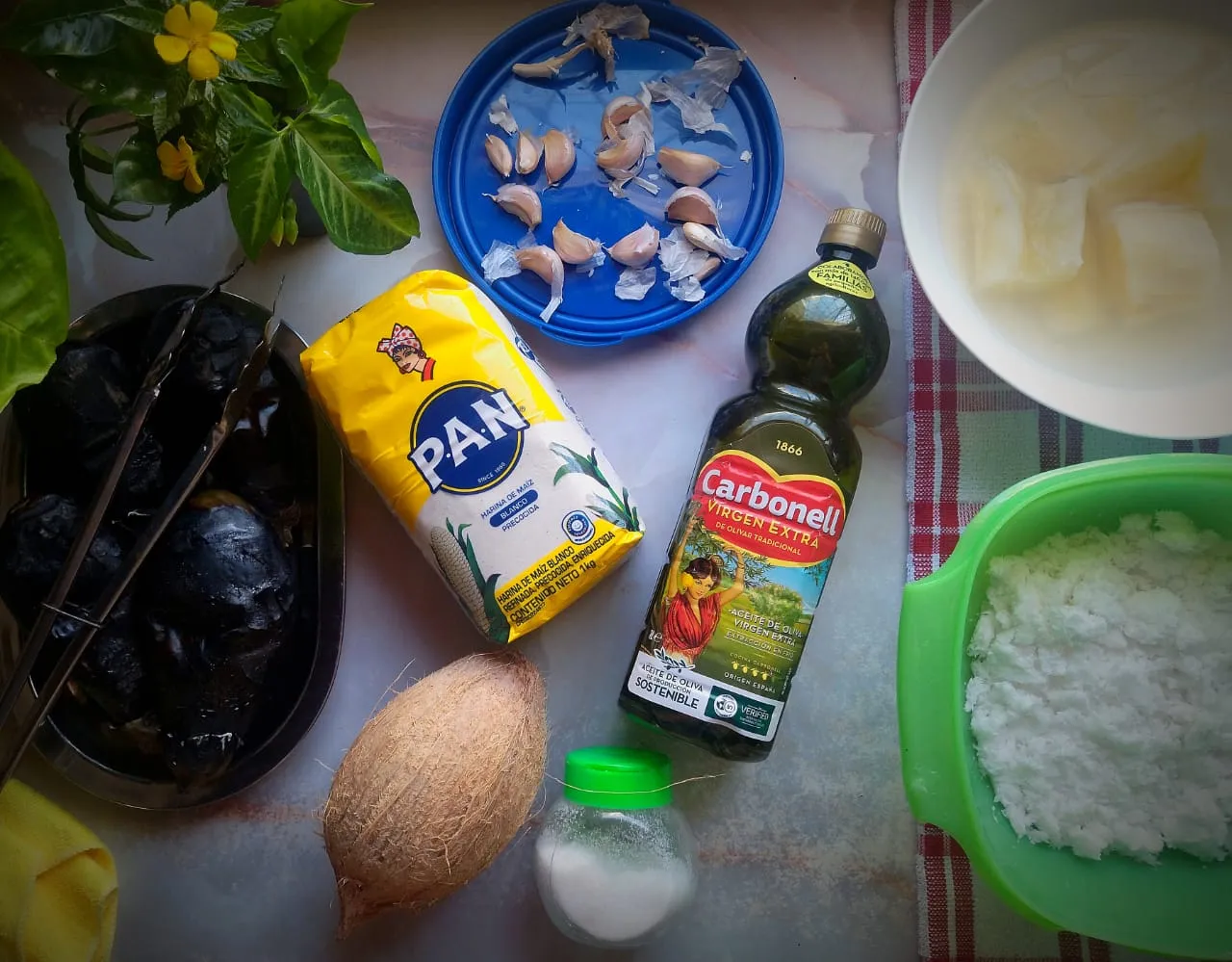
*When I was little, almost every mother had her version of "homemade cachapas," which they made with the ingredients, utensils, and time available. To give you an idea, my mother used eggs, milk, margarine, sugar, salt, grated carrot and corn flour. Each person looks for those characteristics they want to find in their cachapas, according to their experience and liking.

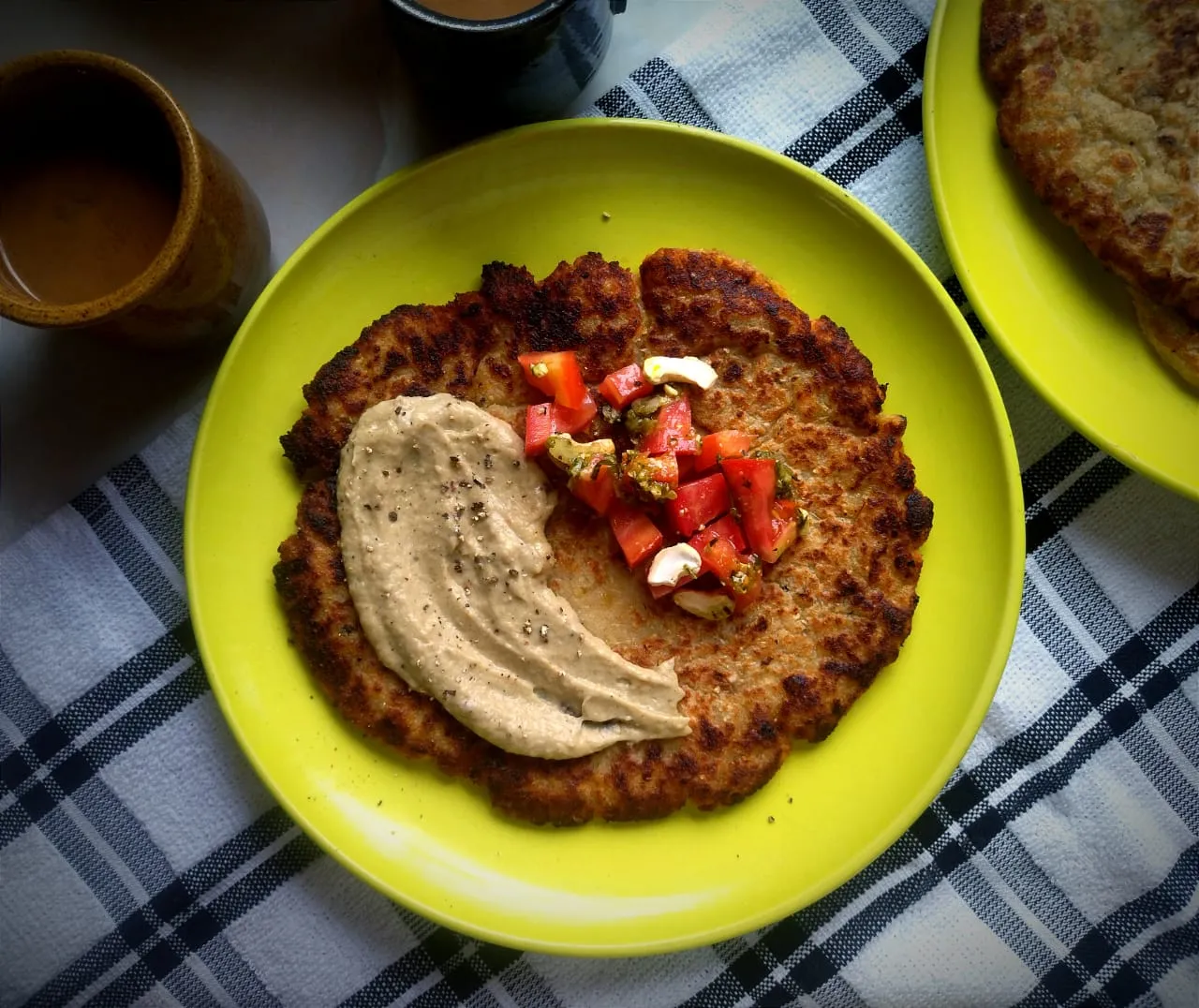
I have used the bagasse from the coconuts I used this morning to make our milk.
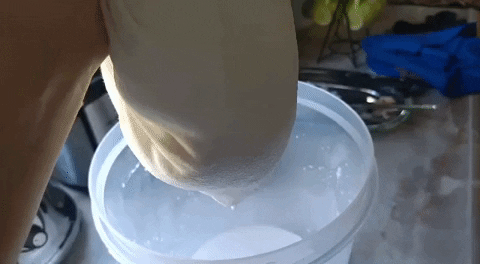
When you extract the milk from the coconut, there is always a lot of bagasse left in the bag. Using it to make cachapas is one of the many uses you can give it.
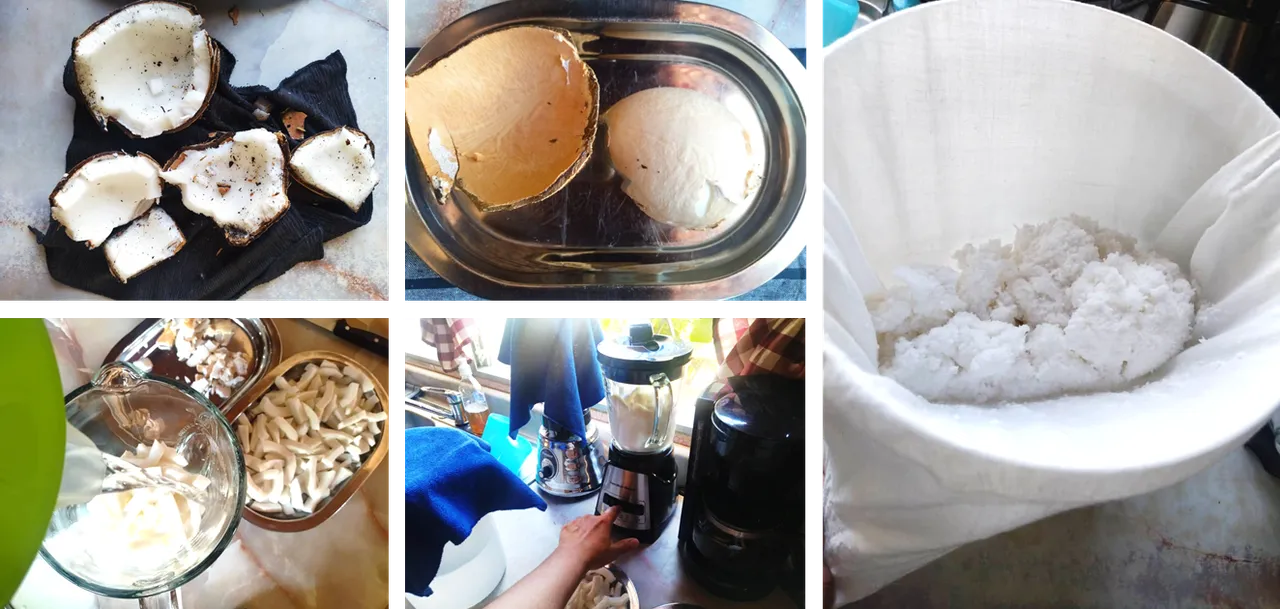
...So once you have the desired amount of coconut bagasse, roast the eggplants directly over the stove fire. Their skin should char. I left them 4 minutes on each side. Then cut the eggplants lengthwise and check that they are good inside; scoop out the pulp and add it to the kneading bowl. Add the boiled cassava and the coconut bagasse and start mashing.
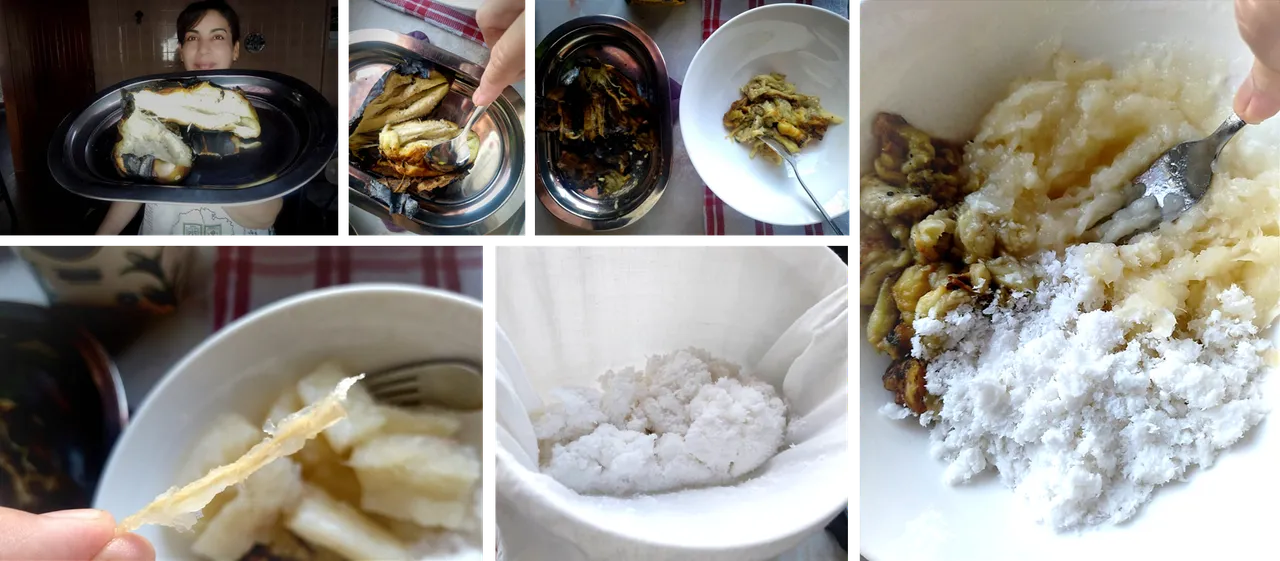
Every cassava root has a thick vein in the center that we cannot chew; you must remove it.
After a couple of minutes, you'll obtain a rustic but quite homogeneous dough. It's time to add the corn flour and the water in which the cassava was cooked.
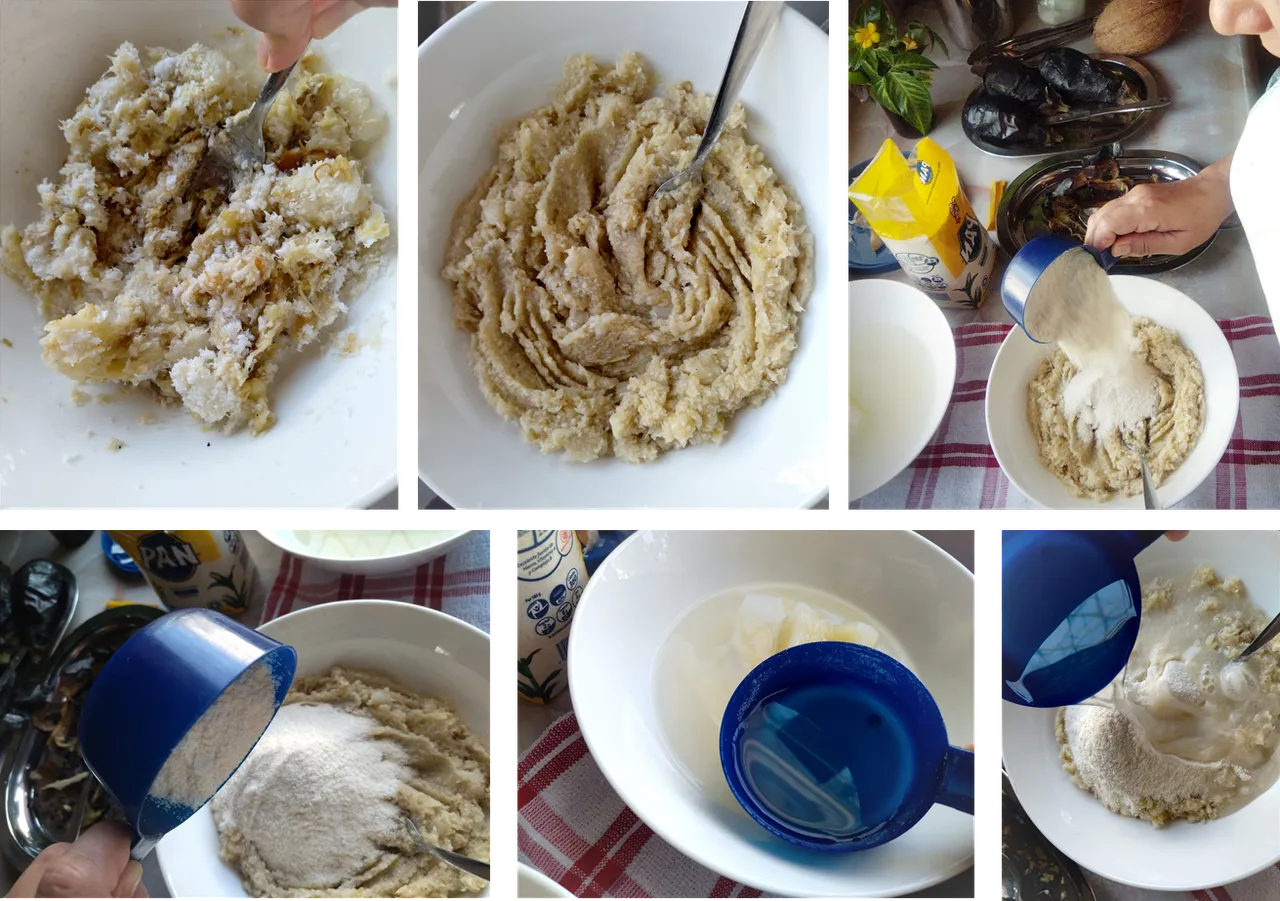
Add the coconut milk, cane sugar, and salt. Mix well with the help of a fork or your clean hands. I use both.
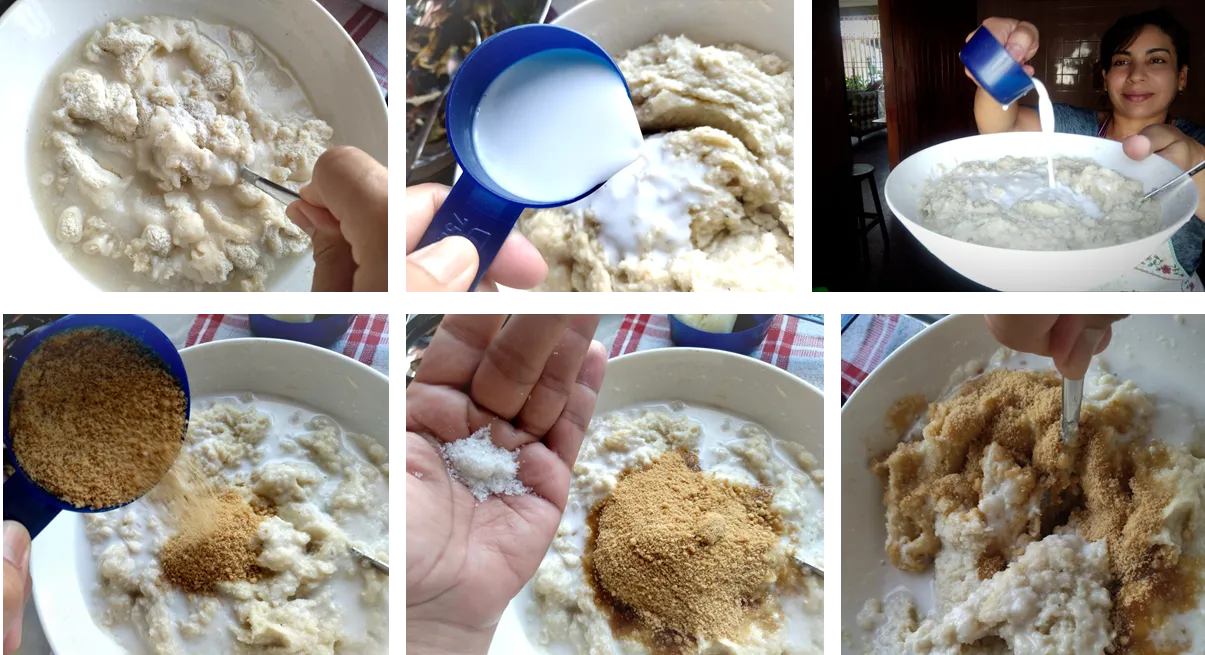
Add the olive oil. As cachapas are a peasant food, I like them to be rustic; so when the dough is completely ready, I like to add small chunks of cassava and eggplant.
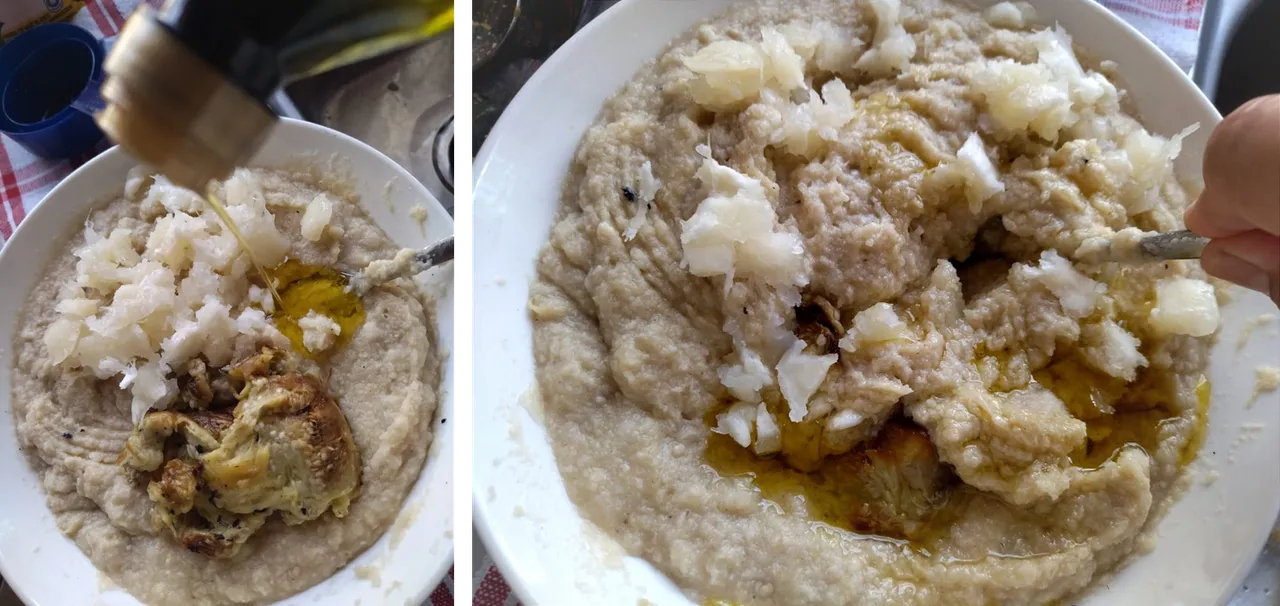
I save some of the cassava and eggplant for this. Then I mix just a little again.
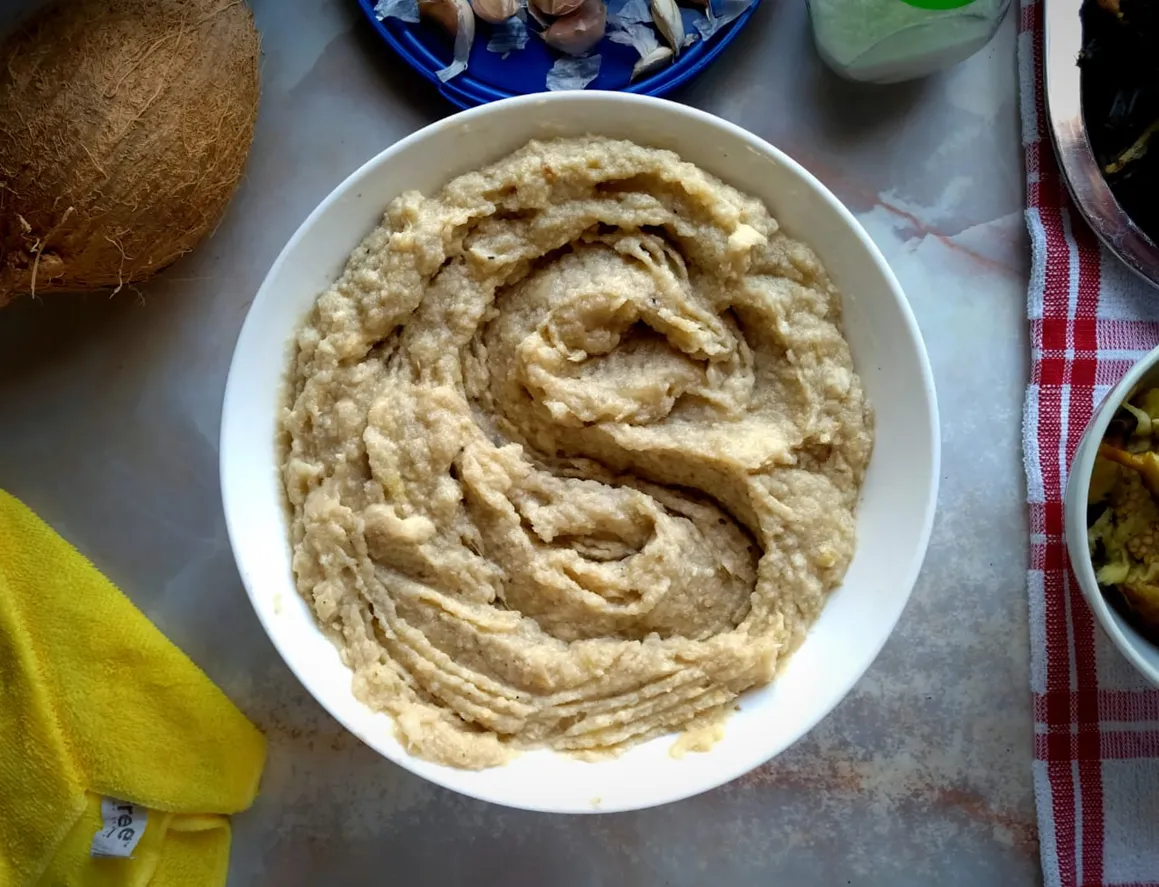
With the help of the back of a spoon, spread a spoonful of dough on a very hot pan and let it cook for 3 minutes on each side over medium-low heat.

They never need to be perfectly round.
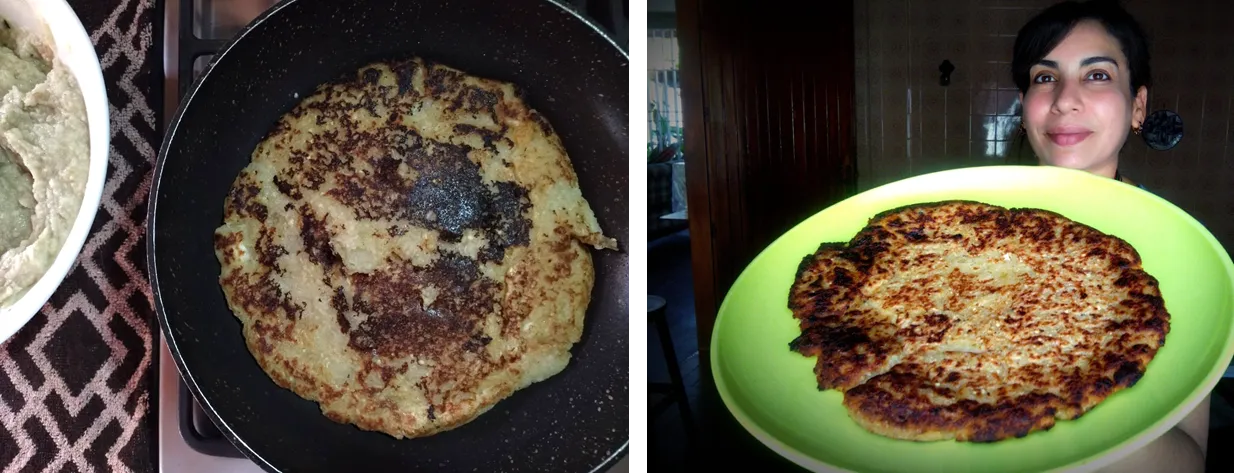
Cachapas are a popular food here in Venezuela; the recipe varies in each region, depending mostly on the variety and quality of the corn they use. In my father's hometown, they were made with yellow corn, quite sweet and with coconut milk, and althogh those are the ones I learned to love, I usually find different recipes for our homemade cachapas very satisfying--like this one.
It's tradition to eat cachapas with fresh cheese; if you want to veganize this dish, I guess you can use tofu. No idea, really. But I can tell you these ones were amazing with eggplant spread I had in the fridge and some fresh tomatoes with basil pesto and cashews.
I added some olive oil and black pepper to the eggplant spread I had n the fridge.
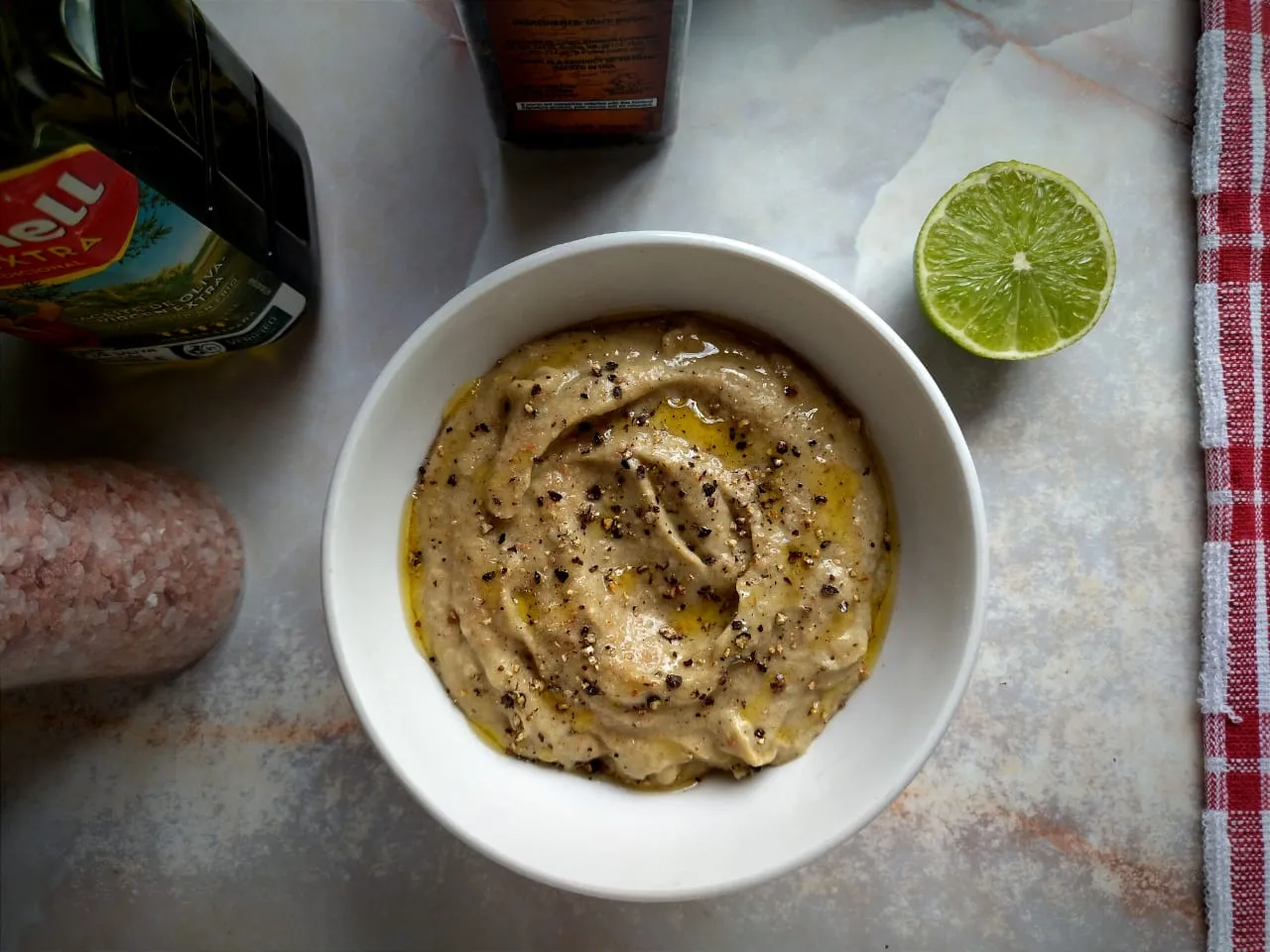
...Added some olive oil, more garlic, and coarsly ground cashews to the thick basil pesto I had in the freezer. Then I chopped a big tomato and mixed all these ingredients; I added some whole cashew nuts to complete this little side.

... And we had a good breakfast.
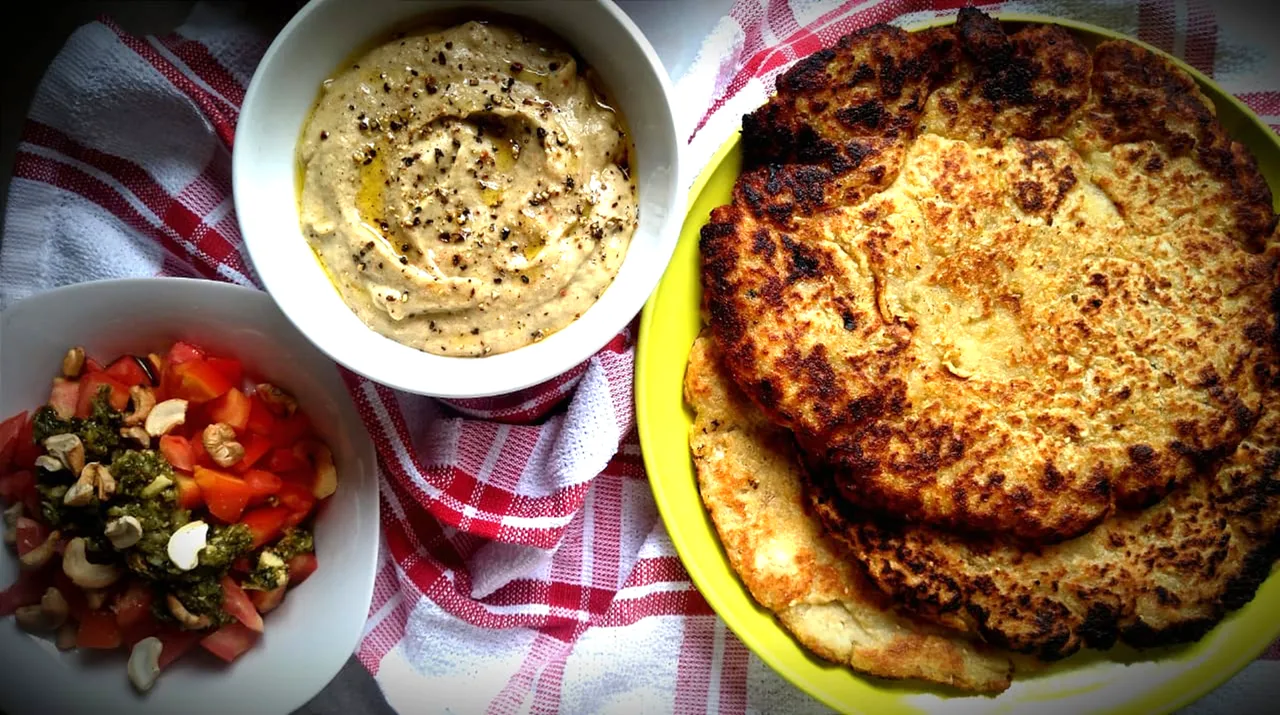
In some cases, as in my father's hometown (Northeastern Venezuela, economic center of Paria Peninsula--and I'm sorry to say, today devastated by neglect the aftermath of long years of drug trafficking), cachapa is one of those "vegan by accident" foods. They use corn, coconut milk and cane honey. Today I used different ingredients, but you can still call it a cachapa 😁
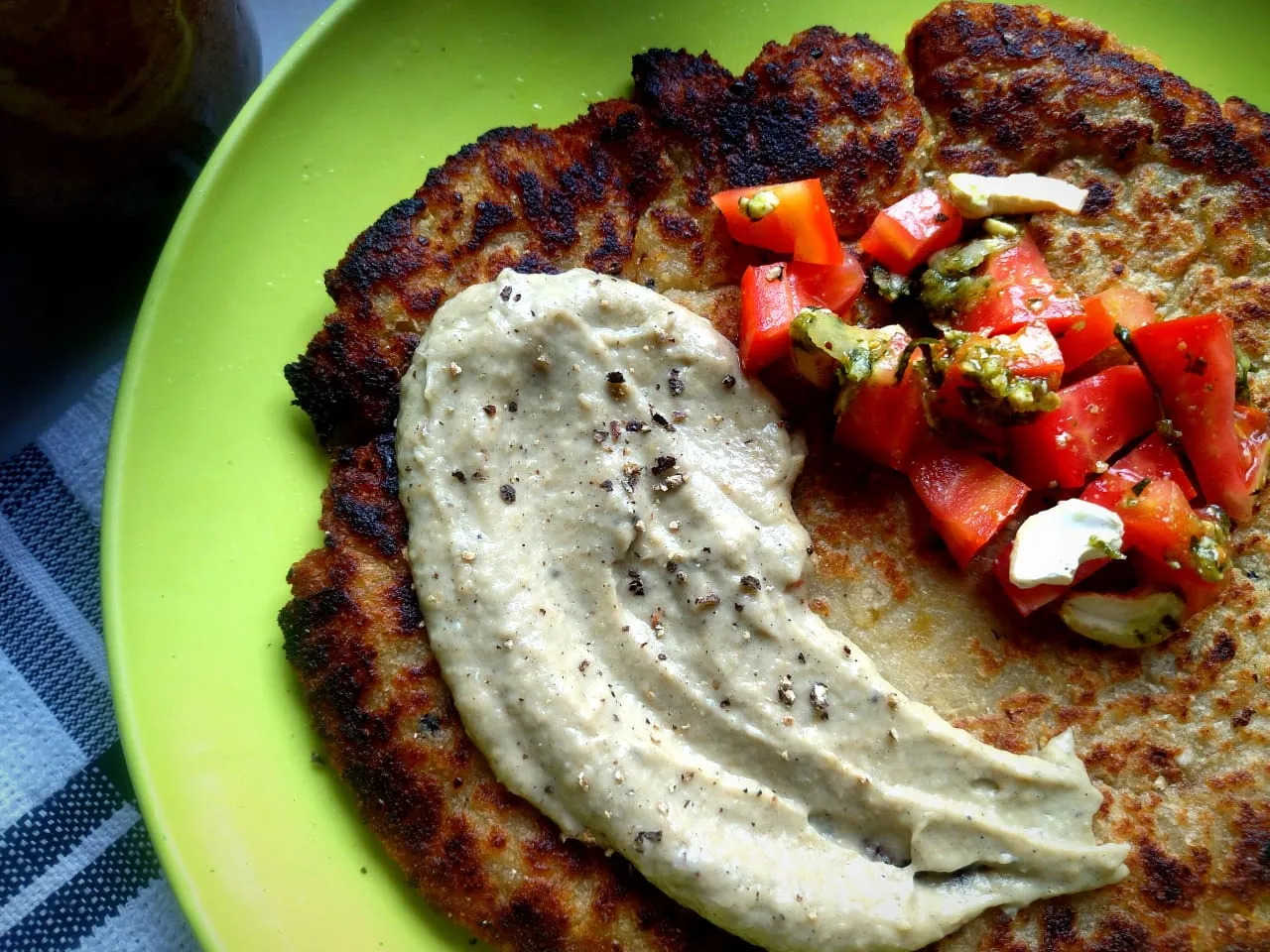
Surely, you also have a recipe that varies a lot, but out of affection for tradition, you continue to call it by the same name. The meals to which we always return have a lot of beautiful nostalgia.
¡Buen provecho!
